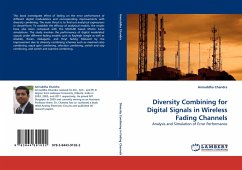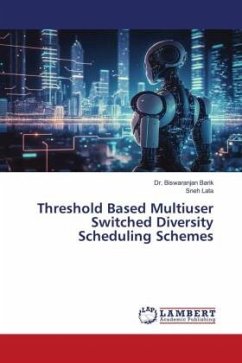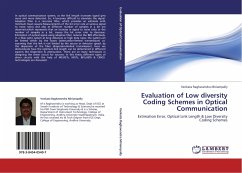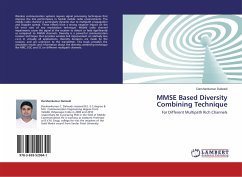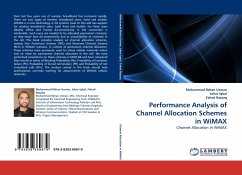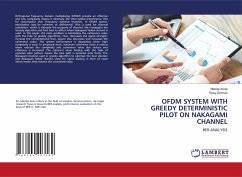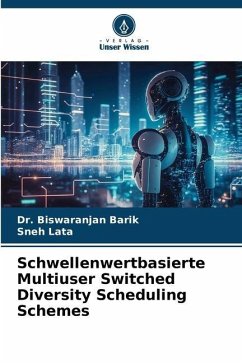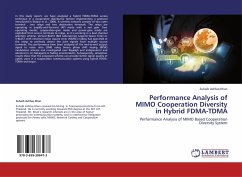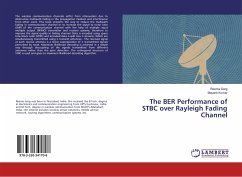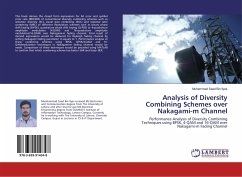
Analysis of Diversity Combining Schemes over Nakagami-m Channel
Performance Analysis of Diversity Combining Techniques using BPSK, 4-QAM and 16-QAM over Nakagami-m Fading Channel
Versandkostenfrei!
Versandfertig in 6-10 Tagen
24,99 €
inkl. MwSt.

PAYBACK Punkte
12 °P sammeln!
This book derives the closed form expressions for bit error and symbol error rate (BER/SER) of conventional diversity combining schemes such as selection diversity (SC), equal gain combining (EGC) and maximal ratio combining (MRC) of different modulation schemes such as binary phase shift keying (B-PSK), quadrature phase shift keying (Q-PSK) or 4-quadrature amplitude modulation (4-QAM) and 16-quadrature amplitude modulation(16-QAM) over Nakagami-m fading channel. Final result of derived expressions would be deduced for Rayleigh fading channel by setting Nakagami fading parameter m equals to 1....
This book derives the closed form expressions for bit error and symbol error rate (BER/SER) of conventional diversity combining schemes such as selection diversity (SC), equal gain combining (EGC) and maximal ratio combining (MRC) of different modulation schemes such as binary phase shift keying (B-PSK), quadrature phase shift keying (Q-PSK) or 4-quadrature amplitude modulation (4-QAM) and 16-quadrature amplitude modulation(16-QAM) over Nakagami-m fading channel. Final result of derived expressions would be deduced for Rayleigh fading channel by setting Nakagami fading parameter m equals to 1. Performance analysis of these combining schemes using BPSK, QPSK/4-QAM and 16-QAMmodulation techniques in Nakagami-m fading channel would be made. Comparison of these techniques would be provided using MATLAB to confirm that which combining scheme has better SNR and lesser BER.



